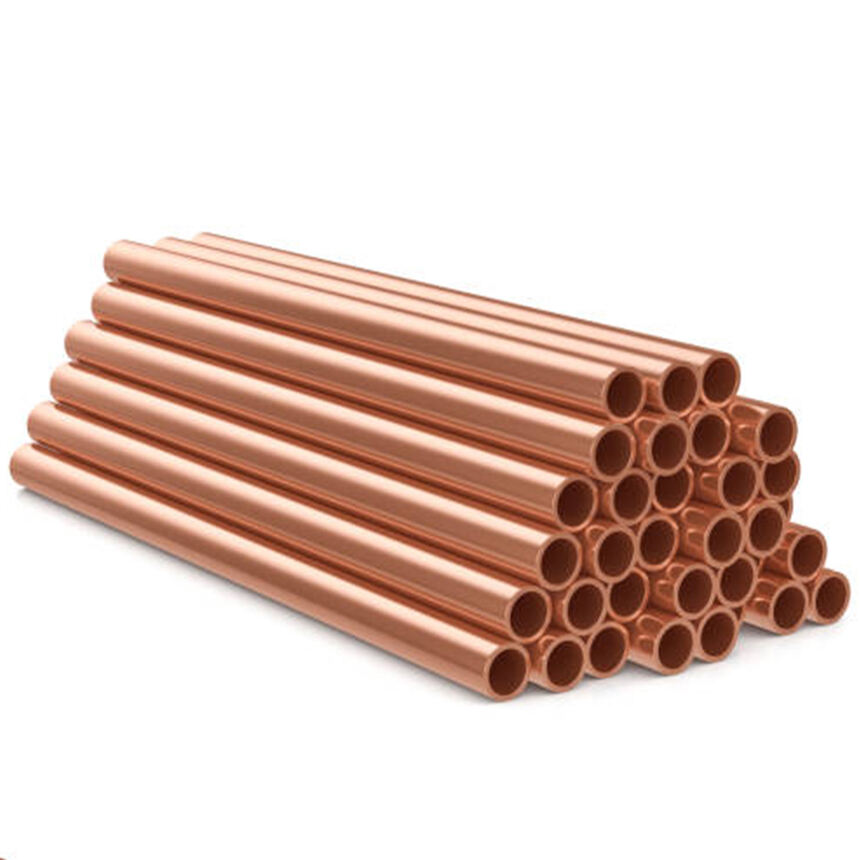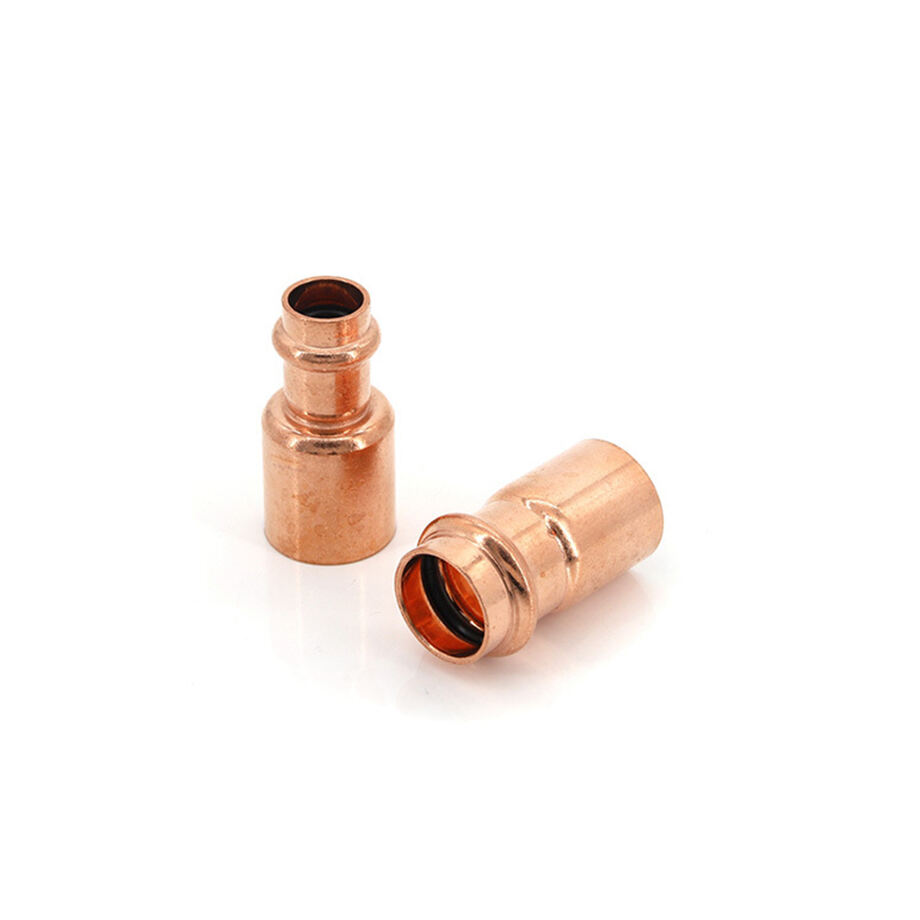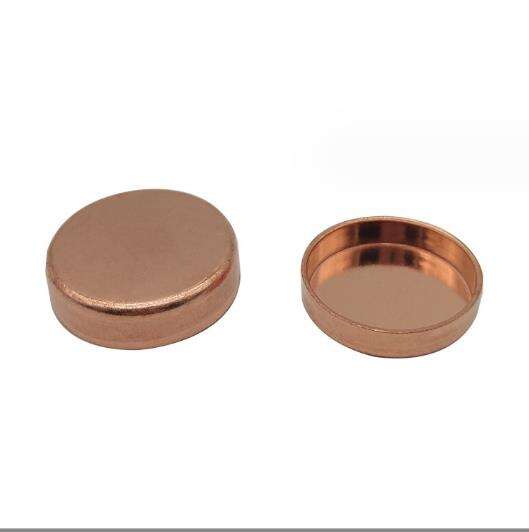Advantages of Copper Pipe Fittings in Modern Pipeline Systems
Corrosion Resistance for Long-Term Durability
Copper pipe fittings are renowned for their exceptional resistance to corrosion, making them a top choice for long-lasting plumbing solutions. Unlike other materials, copper naturally withstands the damaging effects of environmental elements, preserving its structural integrity over extended periods. Studies highlight that copper fittings can maintain their functionality for over 50 years in residential systems, which greatly reduces replacement and maintenance costs. With its ability to retain durability against common corrosive elements in water and the environment, copper is a reliable choice for those seeking both short-term efficiency and long-term durability in their plumbing systems.
Superior Thermal Conductivity & Efficiency
Copper's superior thermal conductivity is a key advantage in plumbing, enabling efficient heat transfer and enhancing the performance of hot water distribution systems. Research indicates that copper's thermal conductivity surpasses that of plastic fittings by up to 400 times, facilitating faster heating times and reducing energy expenditures. This remarkable efficiency ensures consistent water temperatures, optimizing energy savings and contributing to the overall functionality of modern pipeline systems. Therefore, employing copper fittings is not only a decision for energy savings but also a strategy for maintaining reliable and efficient water systems.
Types of Durable Copper Pipe Fittings for Various Applications
Solder Fittings vs. Compression Connections
Solder fittings and compression connections each offer unique advantages depending on the application requirements. Solder fittings create strong, leak-free joints ideal for high-pressure situations, providing a permanent bond that can withstand temperature fluctuations. On the other hand, compression connections provide flexibility and quick installation, allowing for easy disassembly without the need for extensive skill or tools. The choice between these fittings typically depends on the specific needs of the project, such as pressure levels and future maintenance considerations. When selecting fittings, factors like ease of installation and the potential need for redevelopment should be evaluated.
Press-Fit Technology for Industrial Plumbing
Press-fit technology has gained prominence in industrial plumbing for its efficiency in creating secure, leak-free connections without requiring heat. This method utilizes specialized tools to press the fittings onto the pipes, resulting in a tight seal that significantly decreases installation time—up to 40% faster compared to traditional soldering techniques. This speed is especially beneficial for large-scale projects where time is of the essence. Furthermore, the reliability of press-fit fittings is crucial in industrial settings, as they minimize the risk of leaks, thereby reducing costly downtime. The ability to ensure long-lasting durability makes press-fit technology an attractive option for complex industrial applications.
Installation Methods for Long-Lasting Plumbing Systems
Best Practices for Soldering Copper Joints
Soldering copper joints is integral to establishing durable plumbing systems, and it begins with proper surface preparation. Cleaning the surfaces of joints to be soldered is critical in removing oxidization and ensuring strong, long-lasting seals. Using the appropriate type of flux and maintaining the correct soldering temperature are equally vital for joint integrity. This ensures that the solder flows properly, creating a bond that withstands various environmental stresses. Regular training and adherence to industry best practices are recommended to minimize errors and enhance the reliability of plumbing installations. Consistently applying these techniques can significantly reduce issues such as leaks and system failures.
Press Tool Techniques for Leak-Proof Seals
Mastering press tool techniques is essential for creating secure, leak-proof connections in modern plumbing systems. Employing the right techniques ensures a consistent seal, which is crucial in preventing leaks. Using correctly sized fittings and tools is vital to achieving a snug fit, thus reducing the likelihood of post-installation leaks. It’s important to conduct regular inspections and maintenance of press tools to maintain their condition and performance over time. This not only enhances operational efficiency but also extends the lifespan of the plumbing systems, aligning with the best practices for utilizing durable pipe fittings.
Copper vs. Brass: Choosing the Right Material
Why Copper Outperforms Brass in Corrosion Resistance
Copper is noted for its superior corrosion resistance, mainly because of its inherent antimicrobial properties. These properties provide a protective effect against the corrosive elements often present in water systems. By contrast, brass, although generally durable, is susceptible to dezincification. This process can lead to premature failure, particularly in water conditions high in chlorides. Numerous research findings support that copper systems exhibit lower corrosion rates compared to their brass counterparts. Such evidence underscores the advantage of selecting copper when corrosion resistance is a critical consideration for pipeline materials.
Applications Where Brass Fittings Excel
While copper is renowned for its corrosion resistance, brass fittings excel in scenarios where aesthetics and low-pressure environments are prioritized. Brass is widely used in decorative plumbing applications due to its appealing appearance and structural stability. Additionally, it has proven effective in low-pressure situations where corrosive elements are minimal. However, the appropriateness of brass fittings in any application must be confirmed through a comprehensive evaluation of environmental factors and adherence to regulatory standards. In such carefully assessed scenarios, brass plumbing fittings pipes serve as reliable components within the broader landscape of plumbing design.
Advantages of 99.9% Copper in Pipeline Systems
99.9% copper is favored in pipeline systems for its unparalleled stability and corrosion resistance, leading to improved safety and durability. High-purity copper’s stability ensures fewer impurities that could compromise the integrity of the pipeline system over time. Research and industry standards, such as those outlined by the Copper Development Association, support that 99.9% copper products showcase minimal corrosion when exposed to extreme elements. This purity enhances its application performance in special environments such as chemical processing plants and maritime applications where intense corrosion conditions are present. Thus, employing high-purity copper ensures not only the reliability of pipeline systems but also their compliance with safety regulations.





